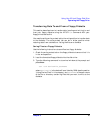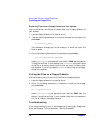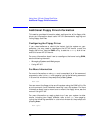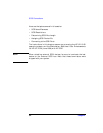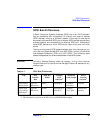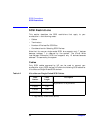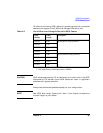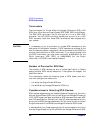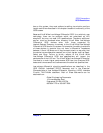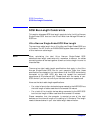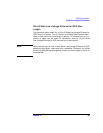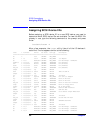
Chapter 4 83
SCSI Connections
SCSI Bus Differences
SCSI Bus Differences
A Small Computer Systems Interface (SCSI) bus is an IEEE standard
bus for connecting your workstation to internal and external devices
(SCSI devices) running at different speeds. There may be one device
connected to the external SCSI port or several SCSI devices may be daisy
chained together and connected to the external SCSI port. Examples of
these SCSI devices are 4-mm DDS-format tape drives and hard disk
drives.
There are two types of SCSI buses available with this workstation—an
Ultra Narrow Single-Ended SCSI bus (NSE SCSI), and an Ultra2 Wide
Low-Voltage Differential SCSI bus (LVD SCSI). The following table
shows the specification differences between these SCSI buses.
CAUTION Currently Hewlett-Packard does not support mixing Ultra Narrow
Single-Ended and Ultra2 Wide Low-Voltage Differential devices on any
one bus type.
Table 4-1 SCSI Bus Differences
Type Data
Transfer
Rate
Data Bus
Width
Available
SCSI
Addresses
1
1. Address 7 is reserved for host controller use on all buses.
Maximum
Cable Length
Device
Physical
Location
2
2. This information is specific to the HP VISUALIZE B1000/C3000 computer.
Ultra Narrow
Single-Ended
Up to 20
Mbytes/sec
8 bits 0 through 6 3.0 meters
(9.84 feet)
External
Ultra2 Wide
Low-Voltage
Differential
Up to 80
Mbytes/sec
16 bits 0 through 6; 8
through 15
12 meters
(39.37 feet)
Internal and
external



